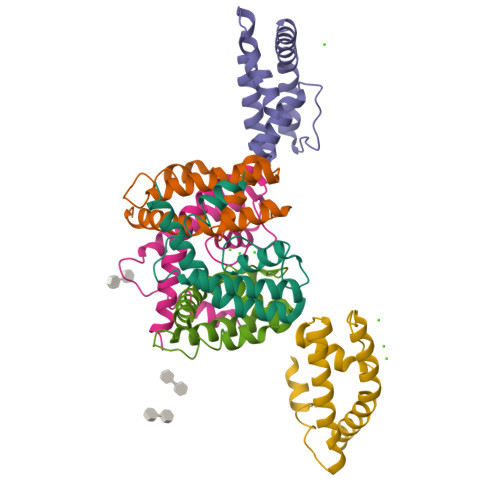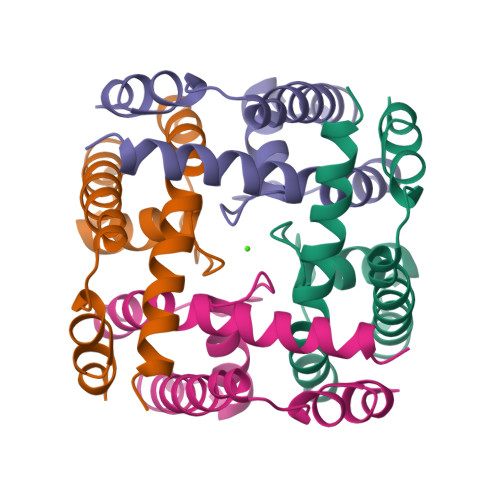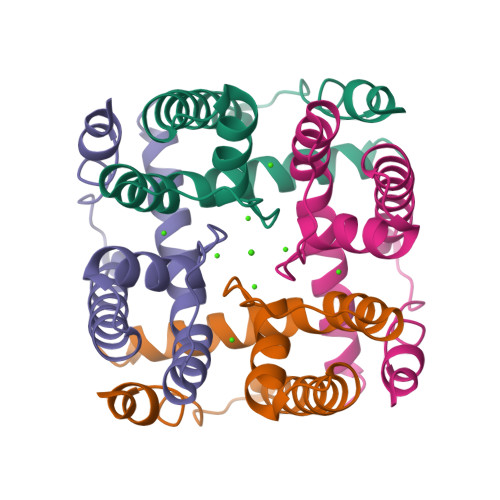Structural and functional characterization of a calcium-activated cation channel from Tsukamurella paurometabola.
Dhakshnamoorthy, B., Rohaim, A., Rui, H., Blachowicz, L., Roux, B.(2016) Nat Commun 7: 12753-12753
- PubMed: 27678077
- DOI: https://doi.org/10.1038/ncomms12753
- Primary Citation of Related Structures:
5CBF, 5CBG, 5CBH - PubMed Abstract:
The selectivity filter is an essential functional element of K + channels that is highly conserved both in terms of its primary sequence and its three-dimensional structure. Here, we investigate the properties of an ion channel from the Gram-positive bacterium Tsukamurella paurometabola with a selectivity filter formed by an uncommon proline-rich sequence. Electrophysiological recordings show that it is a non-selective cation channel and that its activity depends on Ca 2+ concentration. In the crystal structure, the selectivity filter adopts a novel conformation with Ca 2+ ions bound within the filter near the pore helix where they are coordinated by backbone oxygen atoms, a recurrent motif found in multiple proteins. The binding of Ca 2+ ion in the selectivity filter controls the widening of the pore as shown in crystal structures and in molecular dynamics simulations. The structural, functional and computational data provide a characterization of this calcium-gated cationic channel.
Organizational Affiliation:
Division of Biological Sciences, Department of Biochemistry and Molecular Biology, The University of Chicago 929 East 57th Street Chicago, Illinois 60637, USA.




















